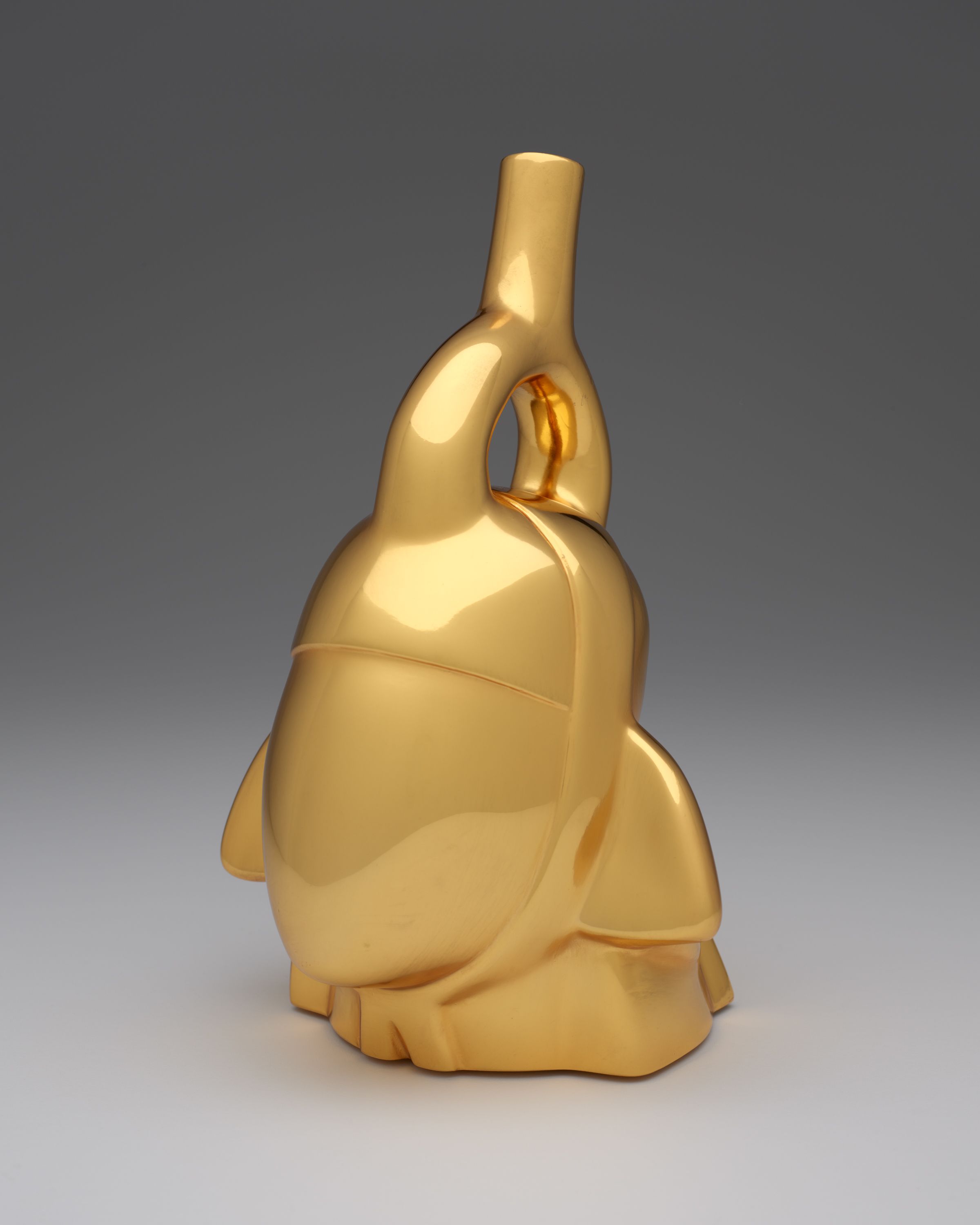In the Museum with Salvador Jiménez-Flores

Ana De Orbegoso, Neo-Huaco #3, 2017. Image courtesy of the Art Institute of Chicago
Ana De Orbegoso, Neo-Huaco #3, 2017. Image courtesy of the Art Institute of Chicago
by Zoya Brumberg (MA 2015)
Neo-Huaco #3, from Peruvian artist Ana De Orbegoso’s series ¿Y qué hacemos con nuestra historia? (So What Do We Do with Our History?), sits quietly among ancient Andean ceramic portrait vessels created by Moche artists more than 1,000 years ago.
De Orbegoso’s figures are displayed in the Art Institute of Chicago’s collection of the Arts of the Americas. The two blank visages reference the structure of the Moche artists, but they are faceless and smooth. The reflective metal-plated resin casts are a stark contrast to the textures of the expressive clay sculptures that surround them.
Assistant Professor of Ceramics Salvador Jiménez-Flores did not anticipate encountering De Orbegoso’s contemporary pieces when he visited the Arts of the Americas collection; their presence among ancient Peruvian vessels was a pleasant surprise. He was drawn to the piece because its blankness “invites you to look closer and reflect yourself into it.” Jiménez-Flores questions the curator’s placement choice, asking “Why not place this artwork in the modern wing of the museum among contemporary artworks?” He wonders if the placement among historical vessels instead of other works of contemporary art does a disservice to the artist, but he considers that other viewers might see it in critical conversation with its surroundings. “So what do we do with our history?” asks the artist’s universal question through a specific cultural reference: pre-Columbian Huaco vessels. In a certain sense, the choice to display the piece among its historical inspiration poses one answer to the query.
Both the art itself and its context in the museum illuminate many of the themes that Jiménez-Flores encourages his students to explore as they study and create ceramics. In his class Time Travel Through the Vessel Form, his students “learn how to make objects based on the historical objects that we see in museums.” They seek inspiration from sacred and secular pieces from all corners of the world, which inspire many questions about the differences between cultural appreciation and appropriation. Additionally, he encourages his students to question the museum’s choice of displaying sacred objects that are not meant for public viewing inside a vitrine. Students learn from historical vessels and then focus on contemporary works like Neo-Hueco #3—works that engage with the past but explore issues of the present. Though De Orbegoso’s medium is not ceramics, she references and is inspired by ceramic arts. Using examples like this also helps students realize that they do not need to limit their creative practices, even in material-based media like ceramics. This exploration allows students to “make their own stories with their own vessels while thinking about form, surface, message, and narrative.”
Museums are imperfect spaces, but we do not have to encounter them passively. Jiménez-Flores reminds us that going to a museum is an active practice—sometimes you have to look beyond curators’ visions. Among the old and new installations, we are able to encounter “artists who look back into the past and to create work in the present that engage contemporary issues and context.” ■

